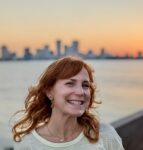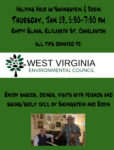- Share on Facebook
- Like
- Digg
- Tumblr
- VKontakte
- Buffer
- Love This
- Odnoklassniki
- Meneame
- Blogger
- Amazon
- Yahoo Mail
- Gmail
- AOL
- Newsvine
- HackerNews
- Evernote
- MySpace
- Mail.ru
- Viadeo
- Line
- Comments
- SMS
- Viber
- Telegram
- Subscribe
- Skype
- Facebook Messenger
- Kakao
- LiveJournal
- Yammer
- Edgar
- Fintel
- Mix
- Instapaper
- Copy Link
- Bluesky
By Maria Russo
On Monday, January 9, the Joint Standing Committee on Energy (Interim) met for the final time before the start of the 86th legislative session. The hot-button topic on the agenda: community solar.
Multiple experts from the field came to present on various aspects of community solar. The presenters included:
- Dan Conant, Founder & CEO of Solar Holler
- Richard Caperton, Vice President of Policy & Market Development at Arcadia
- Adam Edelen, Founder & CEO of Edelen Renewables
- Nancy P. Bruns, Executive Chair of the Dickinson Group
Each speaker presented their unique perspective on the opportunities associated with community solar, including the investment potential and impact on utility rates and power supply in West Virginia.
Some legislature members raised concerns about the reliability of community solar projects, including Senator Rupie Phillips, who compared community solar to fantastical pixie dust. However, many other legislators seemed intrigued by the possibilities of this renewable innovation.
Throughout the presentation, legislators learned of the countless benefits made possible through community solar programs. Some advantages include diversification of energy options in West Virginia, increased capital investment opportunities, and the creation of jobs for communities across the state.
Following the meeting, Delegate Hansen introduced HB2159, “Establishing a community solar program for subscribers to gain credits against their utility bills.” This bill has been referred to the House Energy and Manufacturing Committee and the Judiciary Committee.
The West Virginia Environmental Council looks forward to seeing how the debate on community solar evolves throughout the legislative session.
We invite you to review the introductory materials provided by Richard Caperton at Arcadia. These slides give a brief overview of what community solar is and how it works.








I just want to point out that DISTRIBUTED solar need not be placed on a roof. In a city, a roof is likely to be the best option to avoid theft or vandalism, and it may be the best illuminated spot on a property. But there are many advantages to a ground mounted system for rural dwellers. It’s easy to adjust them seasonally to maximize input at different solar angles; it’s cooler and therefore more efficient; you don’t need to make a hole in your roof;and, in the winter you can stand on the ground and brush snow off your panels when you need that solar input the most, something you don’t want to do if it requires walking on an icy roof when it’s 12 degrees. My husband designed a system using pressure treated wood, now copied by many others, which you can find at spectrumz.com